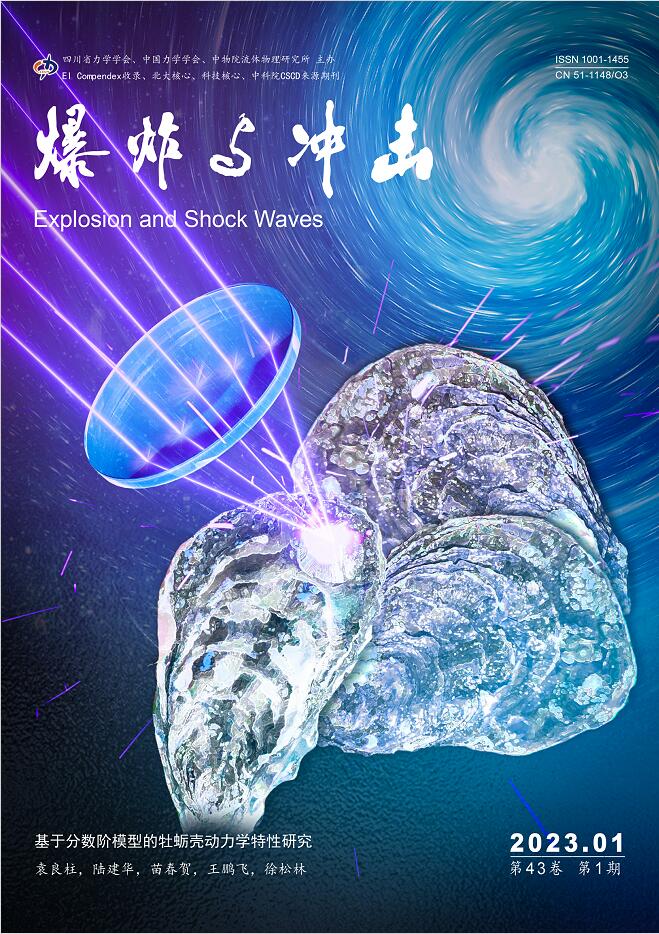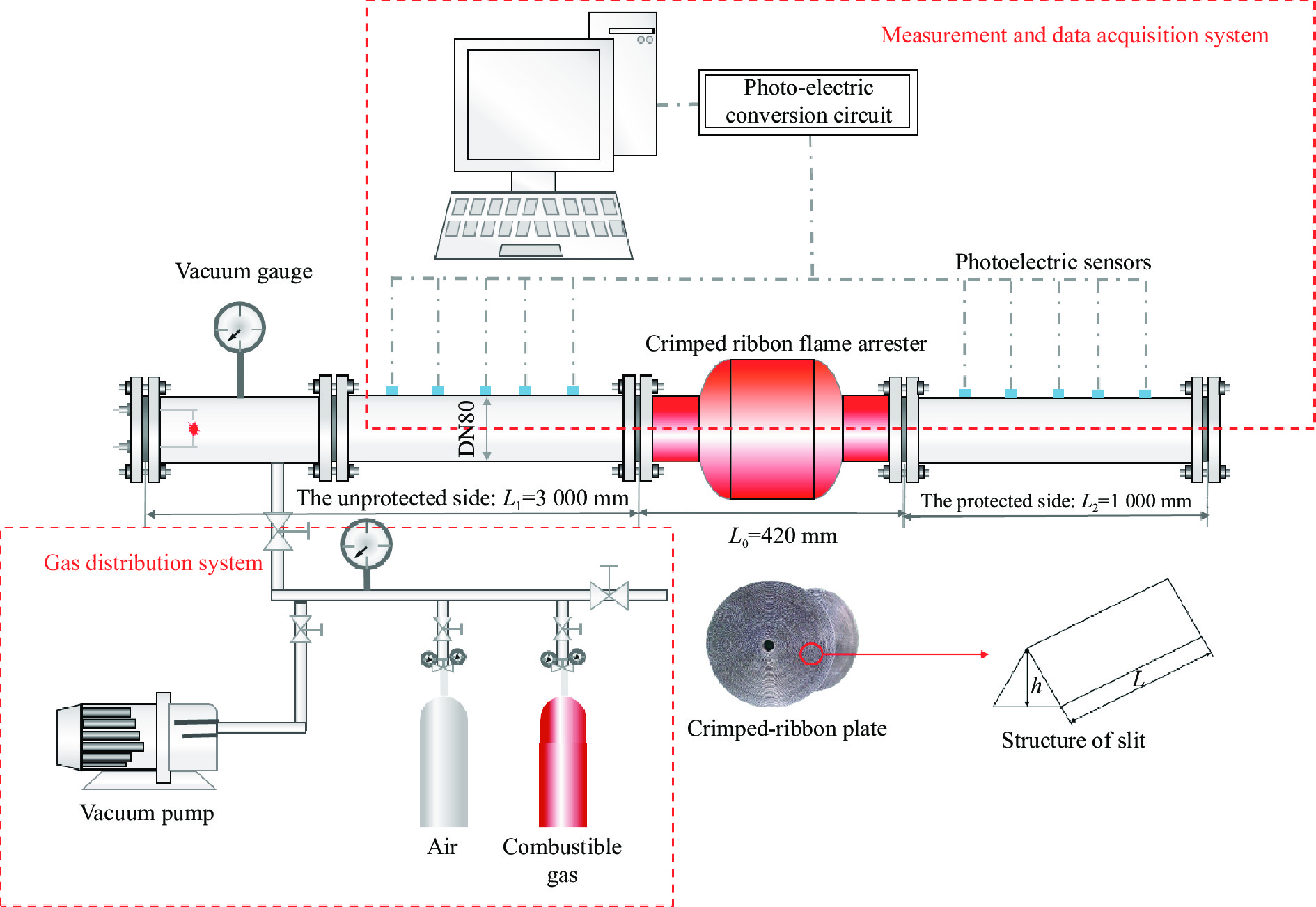| [1] |
PAYMAN W, WHEELER R V. Propagation of flames through tubes of small diameter [J]. Journal of the Chemical Society, Transactions, 1918, 113(2): 36–45. DOI: 10.1039/CT9181300656. |
| [2] |
CUBBAGE P A. Flame traps for use with town gas/air mixtures [M]. London, UK: Gas Gouncil, 1959: 30–47.
|
| [3] |
PALMER K N, TONKIN P S. The quenching of flames by crimped ribbon flame arresters: fire research notes 438 [R]. International Association for Fire Safety Science, 1960.
|
| [4] |
LANGFORD B, PALMER K N, TONKIN P S. The performance of flame arresters against flames propagating in various fuel/air mixtures: fire research notes 486 [R]. International Association for Fire Safety Science, 1961.
|
| [5] |
BERLAD A L. Flame quenching by a variable-width rectangular-channel burner as a function of pressure for various propane-oxygen-nitrogen mixtures [J]. Journal of Physical Chemistry, 1954, 58(11): 1023–1026. DOI: 10.1021/j150521a021. |
| [6] |
KERSTEN C, FÖRSTER H. Investigation of deflagrations and detonations in pipes and flame arresters by high-speed framing [J]. Journal of Loss Prevention in the Process Industries, 2004, 17(1): 43–50. DOI: 10.1016/j.jlp.2003.09.004. |
| [7] |
HENKEL S, ZAKEL S, STOLPE F. Determination of the performance limits of flame arresters at increased oxygen concentrations [J]. Journal of Loss Prevention in the Process Industries, 2019, 58: 17–21. DOI: 10.1016/j.jlp.2019.01.003. |
| [8] |
周凯元, 李宗芬, 周自金. 波纹板阻火器对爆燃火焰淬熄作用的实验研究 [J]. 中国科学技术大学学报, 1997, 27(4): 449–454.
ZHOU K Y, LI Z F, ZHOU Z J. The quenching of deflagration by crimped ribbon flame arresters [J]. Journal of China University of Science and Technology, 1997, 27(4): 449–454.
|
| [9] |
周凯元. 气体爆燃火焰在狭缝中的淬熄 [J]. 火灾科学, 1999, 8(1): 22–33.
ZHOU K Y. The quenching of gaseous deflagration in narrow channels [J]. Fire Safety Science, 1999, 8(1): 22–33.
|
| [10] |
CHEN P. Numerical simulation of premixed combustiable gas explosion in duct and study on quenching effects of inert gas [D]. Dalian, Liaoning, China: Dalian University of Technology, 2007. DOI: 10.7666/d.y1093162. |
| [11] |
张省漪. 多孔结构对管道内火焰速度和压力的影响 [D]. 辽宁大连: 大连理工大学, 2011.
ZHANG S Y. The effect of porous structure on flame velocity and pressure in pipes [D]. Dalian, Liaoning, China: Dalian University of Technology, 2011.
|
| [12] |
SUN S C, BI M S, LIU G, et al. Detonation flame propagation and quenching characteristics in crimped-ribbon flame arrester [J]. Journal of Chemical Industry and Engineering, 2016, 5(5): 2176–2184. DOI: 10.11949/j.issn.0438-1157.20151383. |
| [13] |
孙少辰. 波纹管道阻火器系统的阻爆特性研究 [D]. 辽宁大连: 大连理工大学, 2018.
SUN S C. Research of explosion resistant characteristic in in-line crimped-ribbon flame arrester [D]. Dalian, Liaoning, China: Dalian University of Technology, 2018.
|
| [14] |
WANG L Q, MA H H, SHEN Z W, et al. Quenching of crimped ribbon deflagration arrestor by propane-air premixed flame [J]. Explosion and Shock Waves, 2017, 37(4): 766–772. DOI: 10.11883/1001-1455(2017)04-0766-07. |
| [15] |
BERLAD A L, POTTER A E JR. Prediction of the quenching effect of various surface geometries [J]. Symposium (International) on Combustion, 1955, 5(1): 728–735. DOI: 10.1016/S0082-0784(55)80100-2. |
| [16] |
中华人民共和国国家质量监督检验检疫总局, 中国国家标准化管理委员会. 石油气体管道阻火器: GB/T 13347—2010 [S]. 北京: 中国标准出版社, 2011.
General Administration of Quality Supervision, Inspection and Quarantine of the People’s Republic of China, Standardization Administration of the People’s Republic of China. Flame arresters for petroleum gas pipeline systems: GB/T 13347—2010 [S]. Beijing, China: Standards Press of China, 2011.
|










 DownLoad:
DownLoad:








